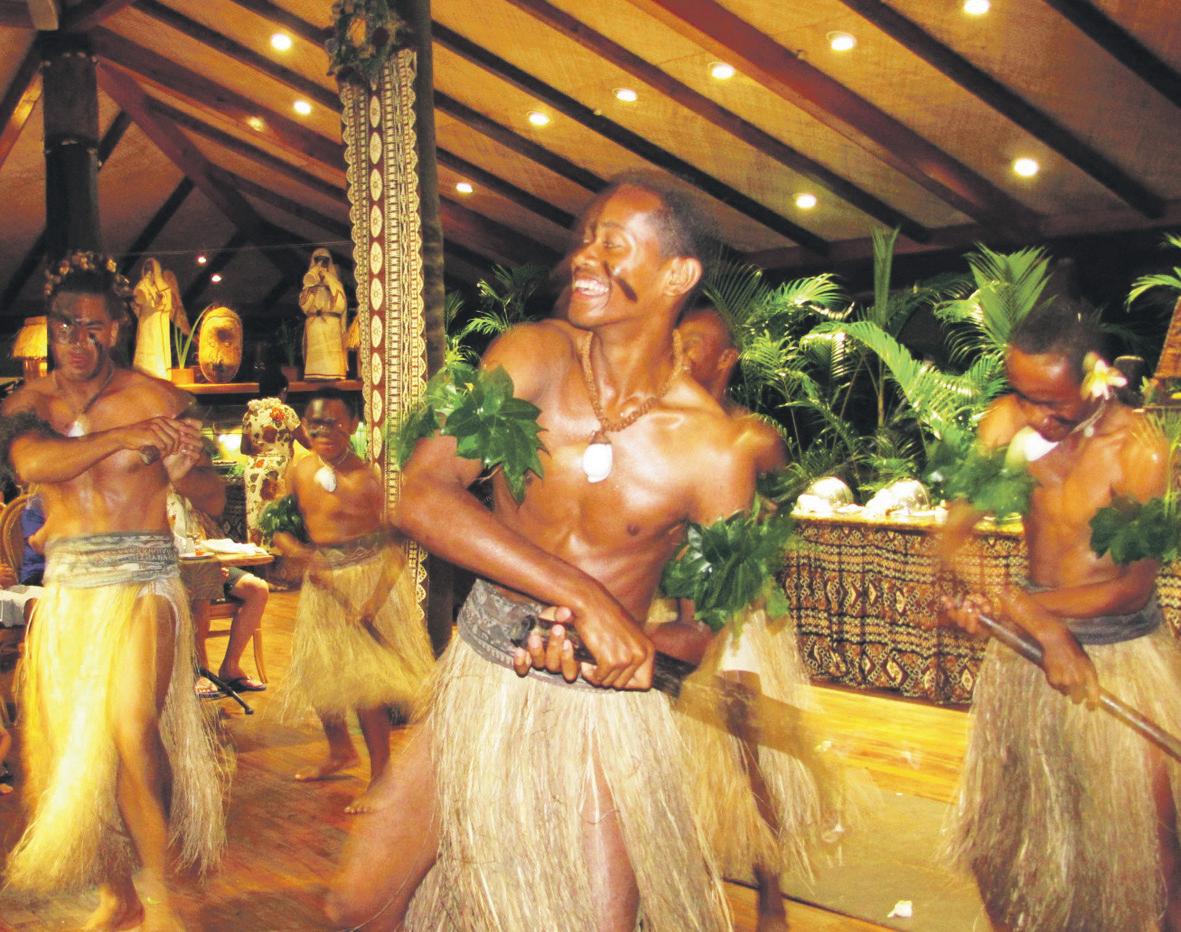
3 minute read
Friendly Fiji
from 2013-12 Sydney (1)
by Indian Link
BY PEtrA O’NEiLL
In celebration of my twin daughters’ 4th birthday I took them on their first overseas holiday to Fiji. As we disembarked from the plane and began the walk towards the taxi stand, Nicky turned and ran back to the craft on hearing a deafening welcome cry of ‘Bula’ (Hello!) from large men in grass skirts, wielding clubs for dramatic effect. Several trips later we return to explore the Coral Coast on the main island of Viti Levu.
The drive from the airport passes Nadi, predominantly an Indian town with the Sri Siva Subramaniya Temple, the largest in the southern hemisphere, and spice shops and Indian restaurants lining the main street. With villages, coconut trees, sugarcane and pineapple plantations, Fiji’s coastal road is a picturesque drive circling the island as beautiful beaches, coral reefs and scenic bays come into view. We arrive at our hotel, Outrigger on the Lagoon, and for the next week, my teenage daughters spend their days by the pool while I venture off exploring the island.
More than just an idyllic holiday destination in the South Pacific, Fiji is friendly. It took me several days to realise, as I walked along the roadside, that a toot from a passing car was a way of asking whether I was in need of a lift. After walking for several kilometres on the first day and many toots later, a mini bus with young backpackers onboard stopped and the guide from Fee Jee Experience offered me a ride. Over the next few days, I was offered lifts by an academic returning to Fiji University with her students in tow; Inoke, an attorney going home with his daughter after a conference; and taxi drivers offering a lift while on their way to collect passengers. I also caught local buses piled high with fresh fruit and vegetables, with frequent stops for children making their way to school.
I caught a bus to Suva, the capital and home to half of Fiji’s population, and a city that seems to be subjected to a constant drizzle. I visited the lively market, had an excellent Indian lunch with local ingredients replacing those that are not locally available, and visited the Fiji Museum, which tells the country’s story through musical instruments, cooking tools and war clubs. I also visited Pacific Harbour, with several resorts and a marina.
Fiji’s most beautiful beach is Natadola, a long crescent shaped beach of white sand. With a golf course and several expensive resort hotels, while lovely, those staying here had little inclination to venture beyond.
I caught the local bus several times to Sigatoka, the largest town on the Coral Coast and the commercial centre for the farming communities upriver in the Sigatoka Valley. The fresh produce market sold the sweetest pineapples, and roots for making kava were piled high in bunches.

A few supermarkets, restaurants, a Mosque and souvenir stores make up the compact town.
Locals advised that I should do two things while in Fiji - take a cruise to the islands and travel into the interior.



After crossing the Sigatoka River by boat, we hopped into an open 4WD jeep with considerable horsepower and for the next hour we went up and down hills along the valley road, skirting by the river manoeuvred with considerable skill by Josephine, our tour guide. Stopping at a village we met villagers climbing onboard a truck to attend a church service. An elderly man hopped out, came towards us and presented me with a flower garland.
At Naihehe Cave more than 170 metres long, we waded knee deep in clear water to the dark interior before being offered kava by the village chief. Inevitably, visitors will be invited to drink kava, a relaxing traditional drink made from the kava root that numbs your tongue and tastes like bitter liquid mud. Made by placing ground kava root in a cloth infused with water in a wooden bowl, it is offered as a gesture of welcome.
Our final day was spent on Ra Marama, a beautifully restored tall ship as we cruised to Tivua Island for snorkelling, kayaking and a tropical buffet lunch. With the most perfect of sunny skies, a sudden storm had us running for cover, with offers of kava. We returned back to the hotel with the crew singing merrily.
Fiji is a country with a strong cultural heritage of Fijians and descendants of Indian labourers who were brought to work in the sugar industry between 1879 and 1916. On our last night we










